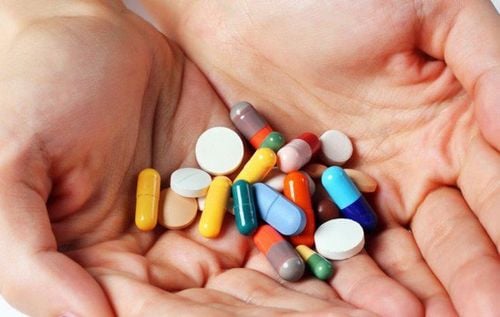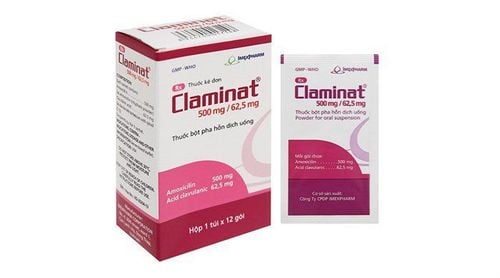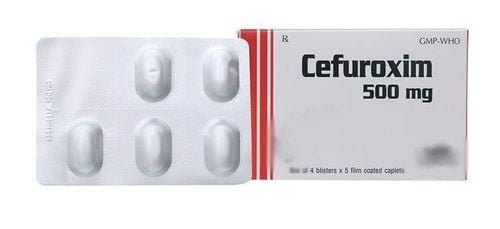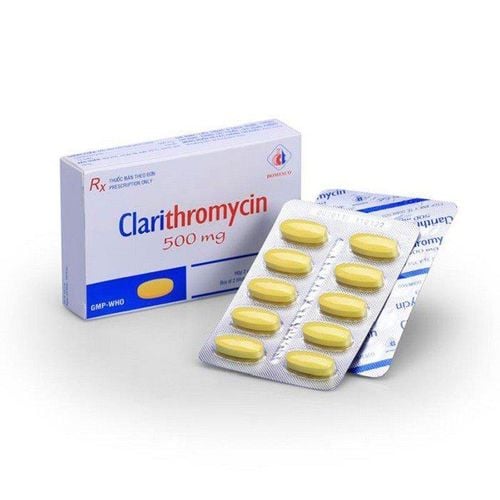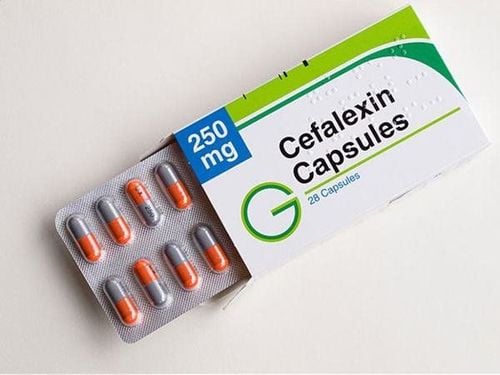This is an automatically translated article.
Safepim is an antibiotic indicated in the treatment of infections caused by sensitive bacteria such as urinary tract infections, skin and soft tissue infections, severe pneumonia, sepsis... Let's find out about the uses and notes when using Safepim through the article below.
1. Uses of Safepim
“What is Safepim 1000?” . Safepim 1000 contains the active ingredient Cefepim Hydorclorid corresponding to Cefepim 1000mg in the form of powder for injection.
The active ingredient Cefepim belongs to the 4th generation Cephalosporin antibiotic group with a broader spectrum of action than the 3rd generation Cephalosporin. Cefepim is administered by injection, acting by inhibiting the synthesis of mucopeptides in the bacterial cell wall. Organisms susceptible to Cefepim include Pseudomonas Aeruginosa, Enterobacteriaceae, Haemophilus influenzae, Neisseria gonorrhoeae, Staphylococcus and Streptococcus. The drug is not affected by the enzyme Betalactamase.
Safepim 1000 is indicated in the following cases:
Treatment of complicated urinary tract infections (including cases with associated pyelonephritis) caused by susceptible strains of E.coli or Klebsiella pneumoniae, Proteus Mirabilis with drugs; Treatment of skin and skin structure infections caused by methicillin-susceptible strains of Staphylococcus Aureus or Cefepim-susceptible Streptococcus Pyogenes; Treatment of severe pneumonia, pneumonia accompanied by bacteremia caused by strains of Pseudomonas Aeruginosa, Streptococcus Pneumoniae, Enterobacter spp., Enterobacter spp. drug sensitivity; Treatment of sepsis caused by susceptible bacteria.
2. Dosage of Safepim
Safepim is administered by slow intravenous injection for 3-5 minutes, intravenous infusion or deep intramuscular injection. The dose of the drug used is prescribed by the doctor based on the severity of the patient's illness. Some recommendations on the dosage of Safepim are as follows:
Treatment of complicated urinary tract infections, severe infections of the skin and skin structures in patients over 12 years of age: 2g intravenously every 12 hours, every 12 hours. the drug duration is 10 days; Treatment of severe pneumonia, even with sepsis: 2g intravenously every 12 hours, taking the drug for 7-10 days; Dosage in patients with renal failure: Patients with renal failure with creatinine clearance less than 60ml/min take the same starting dose as normal people, the maintenance dose is calculated according to the patient's creatinine clearance; For patients on dialysis: About 68% of the dose of Cefepim in the body is lost after 3 hours of dialysis, so for patients undergoing dialysis, it is necessary to compensate for a dose equivalent to the original dose. Patients on outpatient peritoneal dialysis should usually be given their usual dose every 48 hours rather than every 12 hours.
3. Safepim side effects
Safepim 1000 may cause some side effects as follows:
Common: Diarrhea, rash, pain at the injection site; Uncommon: Headache, fever, eosinophilia, agranulocytosis, positive Coombs test without hemolysis, thrombophlebitis, vomiting, nausea, oral candidiasis, pruritus, urticaria, increased liver enzymes, paresthesia; Rare: Edema, dizziness, anaphylaxis, neutropenia, vasodilatation, hypotension, pseudomembranous colitis, colitis, abdominal pain, cramps, arthralgia, vaginitis, buzzing ears, blurred vision. Patients need to inform their doctor if they experience unwanted effects when using Safepim.
4. Precautions when using Safepim
4.1. Contraindications Contraindicated using Safepim in the following cases:
Patients with hypersensitivity to Cefepim, Cephalosporin antibiotics or any ingredient of Safepim; Patients allergic to L-Arginin. 4.2. Use with caution Patients with a history of anaphylaxis to penicillins (about 5-10% of patients allergic to penicillins have cross-reactivity with cephalosporins). In cases of severe infections requiring beta-lactam drugs, cephalosporins may be considered in patients allergic to penicillins but must be closely monitored and available for treatment of anaphylaxis.
For patients with renal failure, the dose should be reduced according to the creatinine clearance.
Before use, it is necessary to check the ampoule to ensure that the injection solution is transparent, does not precipitate, does not change color.
Safety has not been established in children under 12 years of age. Therefore, it is not recommended to treat with Safepim in this population.
For pregnant women: Use Safepim in pregnant women only when the benefits outweigh the risks.
For women who are breast-feeding: Small amounts of Cefepime are excreted in breast milk and may cause the following problems in the baby: Changes in intestinal bacteria, direct effects of the drug on the baby, hesitate to evaluate bacterial culture results in the presence of high fever. Therefore, it is necessary to monitor nursing infants in mothers treated with cefepime.
Drivers, machine operators: The effects of Cefepim have not been recorded on these subjects.
Store Safepim at room temperature, away from sunlight and high humidity.
5. Safepim . drug interactions
The combined use of Cefepime and Amikacin is less nephrotoxic than Gentamicin or Tobramycin in combination with Cefalotin.
Avoid combined use of Cefepime with furosemide because of the risk of deafness.
Drug interactions occur that increase the risk of having effects and reduce the therapeutic effect of Safepim, so to ensure safety and effectiveness in treating patients, it is necessary to inform doctors about drugs and foods. were using before taking Safepim.
In addition to the information shared above, if in the process of using Safepim, the patient has any other problems, they can contact the prescribing doctor for in-depth advice.




